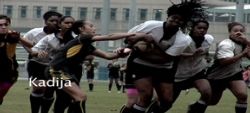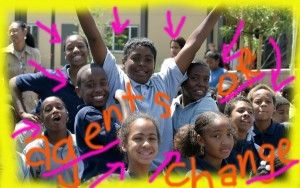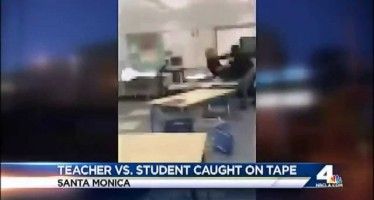South L.A.'s Charter Success
AUG. 7, 2010
By JOHN SEILER
The goal is bold: To graduate 2,000 students from inner-city high schools in South Los Angeles — then have them all graduate from college. The method: put 40 charter schools within the 45 square miles of Los Angeles bounded by the 10, 105, 110 and 405 freeways.
Those are the goals the Inner City Education Foundation Public Schools (ICEF), Michael Piscal told me; he’s the founder and CEO of ICEF. Currently, the non-profit foundation runs 15 schools in that area.
The charter-schools movement began in Minnesota in 1991. It spread throughout the country in the past two decades, including around California. These are all public schools, not private, and receive tax money for operations. But they have more latitude in how they are run and are able to innovate.
Some charters are single schools. Others are larger organizations and can encompass many schools. Piscal pointed out that some charter school foundations operate many schools over a large geographic area. But his idea is to concentrate on one area that really needs help — which certainly describes South Los Angeles.
For all of Los Angeles Unified School District, the high school graduation rate is just 44 percent, according to recent data from Education Week, the second-worst dropout rate in the country after Detroit. And dropping out of school is highly correlated with crime. According to the California Dropout Research Project at the University of California, dropouts cost California taxpayers $1.1 billion in year in added costs from higher crime and welfare payments.
By contrast, ICEF’s View Park Preparatory High School’s first graduating class, in 2007, graduated 100 percent of its seniors. This is not due to cherry-picking students. Students attended based on a lottery, and all came from local neighborhoods, which are almost entirely African-American. Graduation rates in 2008 and 2009 also were 100 percent.
College attendance also is high, with 75 percent from the Class of 2009’s 144 students attending four-year colleges, and 22 percent attending two-year colleges. And the kids don’t just go to college for a year and drop out. Of the students from the Class of 2007 going to college, 91 percent remain in school three years later.
“My goal is to create 2,000 college graduates from within the community,” Piscal said. Although many will go elsewhere to lead their lives, “many will stay within the community” to create businesses and jobs, become professionals, and improve the local area.
He said 600,000 people “live between the freeways” in South Los Angeles, an equivalent population to the entire city of Seattle. But, he asked, if Seattle had such low graduation rates in its schools as does Los Angeles overall, “who would work at Microsoft, Boeing and Starbucks? Seattle wouldn’t be Seattle.”
Reading obviously is crucial to life. “Our kids now in elementary school can reach 90 percent above grade level” on standardized tests, Piscal said. Test scores on reading to be released officially later this month “rival test scores in Newport Beach” public schools.
After teaching English for five years at the exclusive Harvard-Westlake School, in 1994 Piscal started ICEF. He told me that if a teacher such as himself leaves Harvard-Westlake, or a similar high-quality school, then nothing much really changes; the school just gets a new, quality teacher. But if a high-quality teacher leaves an inner-city school, then the quality of education can drop dramatically because it’s hard to find a replacement. So for him, teaching inner-city kids an excellent curriculum is much more rewarding. And he hires like-minded teachers.
Curriculum
After teachers, curriculum is the most important thing affecting students. The California Board of Education, cheered by Gov. Arnold Schwarzenegger, just dumbed-down the state’s academic requirements. Doing so will be especially devastating to inner-city kids reaching for the top.
ICEF takes a different approach: Teach all kids a college-prep curriculum. Piscal took the curriculum from Harvard-Westlake and used it in his schools. “We teach our students to write a college-level essay, beginning in sixth grade,” he said. “We also don’t teach to the test, but still get great test scores.”
This avoids a major problem in California education — just ask schoolkids about it — of continually taking tests so they make the school look good on statewide rankings of achievement.
Another big part of the curriculum is arts. ICEF schools put on plays every year. They’re starting an orchestra in the elementary schools. And all the kids learn how to draw.
 Sports are big, too, with an emphasis on rugby. Rugby players have gone on scholarships to play tournaments in Washington, D.C., Hong Kong, New Zealand and England.
Sports are big, too, with an emphasis on rugby. Rugby players have gone on scholarships to play tournaments in Washington, D.C., Hong Kong, New Zealand and England.
When the kids went to England, they stayed at Wellington College (a British high school), one of the founding members of the Rugby Football Union. “We’re at Hogwarts!” Piscal recalls the kids shouting when they got there, because the buildings reminded them of those in the Harry Potter books and movies. “The kids went to classes all week, and were guests at an international rugby match.”
CBS News featured View Park Prep earlier this year in a segment about a donation to the Rugby team from the producers of the move Invictus. Highlighted is a young lady, Taylor Johnson, on the team who will be attending Dartmouth this fall. The movie is about the 1995 South Africa team that, just after the end of apartheid, won Rugby’s World Cup.
 Fernando Pullum Performing Arts High School is named after ICEF’s director of performing arts, Fernando Pullum. He has been named National Music Teacher of the Year and appeared on Oprah. According to his Web site, his students have performed at jazz festivals, “recorded CD’s, and performed with Jackson Browne, Lionel Hampton, Wynton Marsalis, Buddy Collette, James Carter, Gerald Albright, Al Jarreau, and Stevie Wonder.”
Fernando Pullum Performing Arts High School is named after ICEF’s director of performing arts, Fernando Pullum. He has been named National Music Teacher of the Year and appeared on Oprah. According to his Web site, his students have performed at jazz festivals, “recorded CD’s, and performed with Jackson Browne, Lionel Hampton, Wynton Marsalis, Buddy Collette, James Carter, Gerald Albright, Al Jarreau, and Stevie Wonder.”
Success means…
If a team wins the Super Bowl, it’s natural that the some of the assistant coaches will be hired elsewhere. Everybody loves a winner.
Piscal lamented that some of his teachers have been hired by the Boston and Philadelphia public schools to work similar wonders there. That’s unfortunate for ICEF, but another indication what what he’s doing is working.
The idea behind charters is that they will better meet parental — and student — demands for both educational choice and excellence. Some charters fail and are abandoned. Some have even been the center of frauds.
But the best of them, like ICEF’s schools, are so popular they have to turn kids away. Of ICEF graduates, Piscal said, “We’ve given them a great experience.”
John Seiler, an editorial writer with The Orange County Register for 20 years, is a reporter and analyst for CalWatchDog.com. His email: [email protected].
Related Articles
In reform showdown, who does Obama administration target? Disabled CA students
During the budget theater of recent months, the Obama administration’s ruthless determination to make cuts hurt the public was on
Bid to reform teacher firing process thwarted
June 29, 2012 By Joseph Perkins After passage in the state Senate by a 33-4 bipartisan majority, the Assembly Education
What IS going on in CA schools?
California’s government school students score among the lowest on national tests. Now this: Uproar over classroom scuffle reflects a profession





